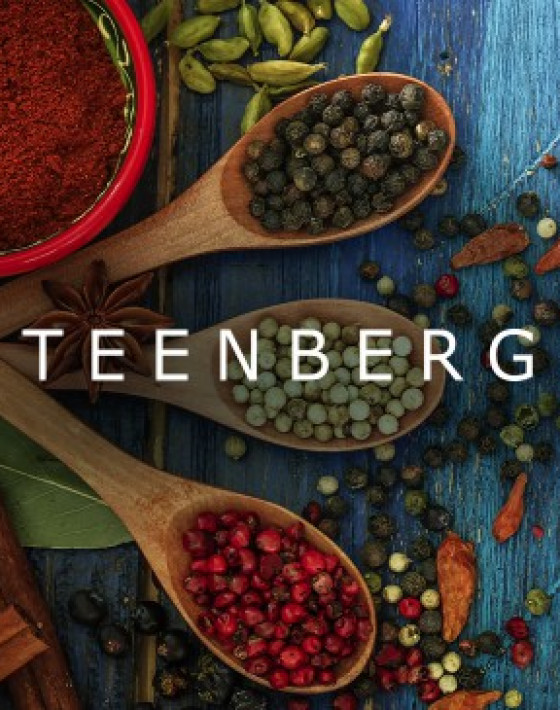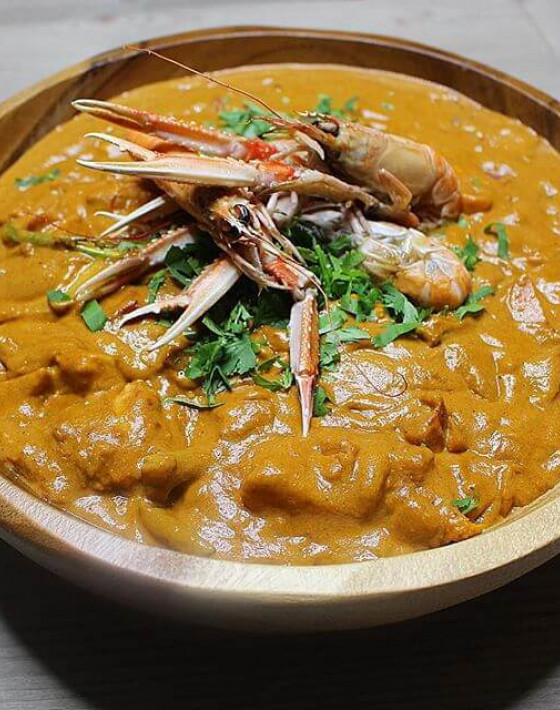Tamarind paste standard jar 150g Steenbergs details and description
Steenbergs Tamarind Concentrate is a great way to use tamarind. Steenbergs tamarind is made from tamarind pulp and water that has been boiled down to concentrate it into a thick, deep black paste. To use: simply follow many recipes which are often worked to use tamarind paste, but if not dilute on the basis of 1tbsp to 3tbsp of water for 4tbsp of paste. Tamarind's flavour is acidic, so you get an initial refreshing sourness followed by a ripe sweetness of tropical fruit. Steenbergs tamarind comes from India.
The tamarind tree is a medium-sized tropical tree, called Tamarindus indica, which grows up to 18m high (60ft high) with spreading branches. Tamarind trees create a large canopy of shade with 10-20 pairs of small oval, pale-green leaves that are arranged alternately in a feather like pattern (pinnate), punctuated by little clusters of red and yellow flowers when the trees in blossoming. After flowering, 10cm (4 inch) long fruits develop. These tamarind fruits are knobbly, light brown pods. The tamarind pods contain an acidic pulp which surrounds 10 shiny, dark brown angular seeds that are around 4mm x 10mm in shape. The pod is brittle, which when it breaks open reveals the inner pulp, which starts to oxidize immediately to a dark brown colour - the characteristic colour of tamarind. To make tamarind concentrate, the pods are harvested, then the outer pod is removed and the pulp partially separated from the seeds to remove the mass of seeds. The pulp is then boiled down to concentrate the oxidised tamarind pulp and strained to remove the fibrous pulp and seeds. Tamarind concentrate is thick and black with a sharply sour taste and a slightly sweet fruit flavour. For more information on tamarind, please try Gernot Katzers Spice Pages or Wikipedia.
Tamarind is used for its sour flavour as well as the sweet fruitiness that comes through after the initial sharply sour bite. In India and Southeast Asia, cooks used these acidulant qualities and its dark molasses-black colour in chutneys, curries, sambhars, pickles and preserves, giving vindaloo is traditional sourness that has morphed into the use of vinegars in many recipe books in the UK. In the UK, its colour and flavours are found in brown sauce and Worcestershire sauce. Tamarind works well with cabbage, chicken, fish, lamb, lentils, pork, poultry and many vegetables; and it works well with others spices, for example chilli, cumin, galangal, garlic, ginger, sugar (especially jaggery), soy sauce and turmeric. Tamarind is worth playing around with especially to make a sauce for fish or to add to salad dressing with some lemon for an oriental style flavour. For some recipe ideas try the BBC website or Allrecipes.
Ingredients: tamarind, water
Tamarind concentrate is part of Steenbergs Specialist range of spices, so is available only to our mail order and online customers, either through Steenbergs directly or via Amazon or other online shopping portals. For further information, you can also ring us on 01765 640 088 or email to enquiries@steenbergs.co.uk.






